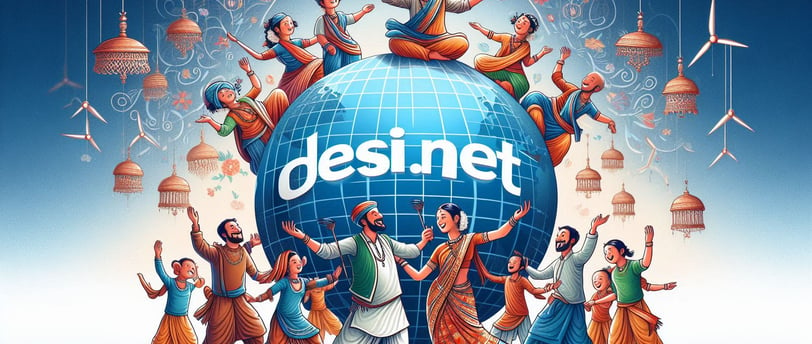For Acquiring or Partnership or Advertising : Contact: Info@IndoDesi.com
From India to the World: The Journey of the Indian Diaspora
The historical journey of the Indian diaspora, from the early migrations during the British colonial period to the modern-day movement of skilled professionals. It covers the reasons behind the migration, the challenges faced, and how these communities have maintained their cultural roots while integrating into their new homes.
Suresh
8/10/20242 min read


Introduction to the Indian Diaspora
The journey of the Indian diaspora is a complex and multifaceted tale, spanning centuries and continents. It begins with the early migrations during the British colonial period and continues with the modern-day movement of skilled professionals. This post aims to delve into the reasons behind these migrations, the challenges faced by the migrant communities, and how they have successfully maintained their cultural roots while assimilating into their new environments.
Early Migrations During the British Colonial Period
The first significant wave of Indian migration occurred during the British colonial period, starting in the early 19th century. Indians were transported to various British colonies such as Mauritius, Fiji, the Caribbean, and parts of Southeast Asia as indentured laborers. This system was essentially a form of bonded labor, often referred to as 'a new system of slavery.' The key reasons for this migration were poverty, landlessness, and lack of employment opportunities in India. Despite the hardships, these communities played a crucial role in the economic development of their new homes.
The Modern-Day Movement of Skilled Professionals
Fast forward to the mid-20th century, a new wave of migration began to emerge. This was characterized by the movement of skilled professionals to countries like the United States, Canada, the United Kingdom, and Australia. Factors such as better educational and employment opportunities, higher standards of living, and political stability attracted a highly educated and professionally skilled segment of Indian society. This trend continues to this day, with thousands of Indians migrating annually in search of a better future.
Challenges Faced by the Indian Diaspora
Despite their significant contributions to their host countries, the Indian diaspora has not been without its challenges. Early migrants faced discrimination, harsh working conditions, and cultural isolation. Even today, issues like immigration restrictions, racial discrimination, and cultural assimilation continue to pose challenges for many Indian immigrants. Overcoming these obstacles requires resilience and adaptability, characteristics that have come to define the Indian diaspora globally.
Maintaining Cultural Roots
One of the most remarkable aspects of the Indian diaspora is its ability to maintain its cultural heritage while integrating into new societies. Indian festivals like Diwali, Holi, and Eid are celebrated with great enthusiasm across the globe. Indian cuisine, music, and Bollywood movies have also gained immense popularity worldwide. Various cultural associations and community centers serve as focal points for maintaining and promoting Indian culture, ensuring that future generations remain connected to their roots.
Conclusion
The journey of the Indian diaspora is a testament to the resilience, adaptability, and cultural richness of Indian people. From indentured laborers during the colonial period to today's skilled professionals, Indians have made their mark on the world. Despite numerous challenges, they have managed to preserve their cultural heritage while contributing significantly to the economic and social fabric of their adopted homes. The story of the Indian diaspora is, in essence, a story of endurance, achievement, and cultural fusion.
